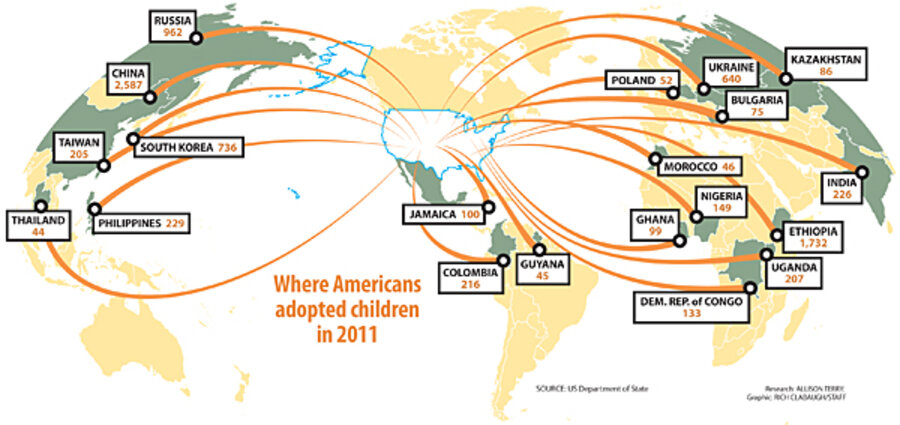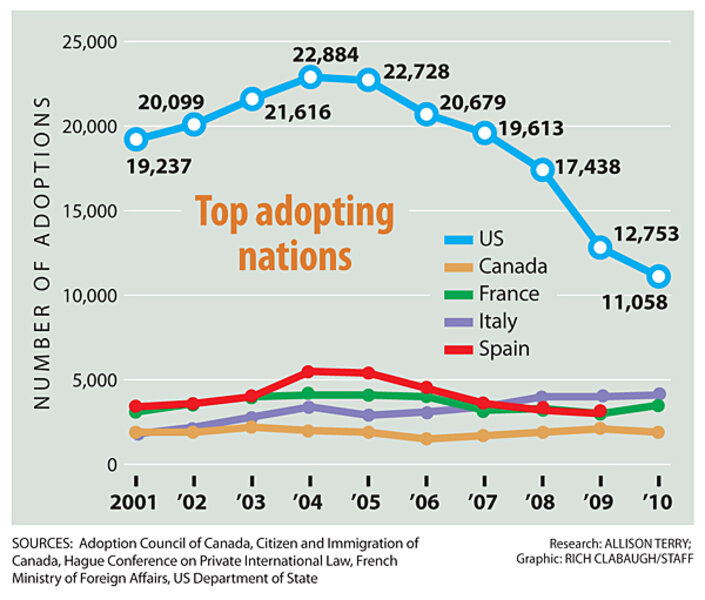China adoption diary: Join the odyssey to adopt Madeleine
Loading...
When you talk to adoptive parents, you often hear about that moment when you “know.” Some call it divine, some call it psychological – but it’s that moment of certainty when you lock on and the child is yours, no question.
For me, that moment came quickly. In the half-light of a Pennsylvania motel room where we took our daughter the night after she was born and her birth mother handed her to me. Out of the flannel bundle in my arms, her eyes twinkled and demanded my gaze – we stared at each other, and … I knew. Mine; beyond DNA, beyond any relinquishments or court proceedings, my child.
This moment happens every day with adoptions all over the world. And, I’m here to tell you it’s the antidote to the adoption angst that media and popular psychology seem to focus on, such as infertility grief, bureaucratic tangles, and the uncertainties of timing. Most adoption goes right, just like most births go right.
And that’s what stands out to me in every adoption – the beauty of a family morphing into new and enduring shapes that bring love and, yes, the challenges that burnish that love. When Monitor business editor Laurent Belsie made the rounds of the newsroom in May with a photo of a little dark-haired girl his family was setting off to adopt in China – I knew we were all going to be fortunate witnesses.
Laurent’s newsroom rounds more typically involve his 10-year-old daughter Grace, a prodigy of poise and vocabulary (not to mention an adorable smile) who carries a basket of homemade cookies or leftover Halloween candy from desk to desk, melting hearts and deadlines. Everyone here in the newsroom has watched Grace grow since Laurent and his wife Gretchen brought her home from China in 2003.
So when many in the newsroom started receiving Gretchen’s rich and funny e-mail reports as they made their way to and across China last month, to meet and adopt their second child, Madeleine, there were suggestions that the missives be turned into a Modern Parenthood serial.
Tomorrow we join the Belsie family – all three – in Gretchen’s first blog as they fly north over the pole to the other side of the world where they would become four. The series will run for two weeks – and, I promise, it’ll be a short daily uplift for you. It’s in keeping with the Monitor’s strong coverage of adoption: See our popular long-running series on Hannah Rocklein, adopted in 1999 from Russia; and Robert Klose’s essays about his adopted Russian sons on our Home Forum page; as well as our recurring coverage of families who have taken in AIDS orphans in South Africa.
Now for some context: The Belsie’s started their second adoption five years ago – the lengthy process a factor of a changed international adoption scene.
As the Monitor reported two years ago, international adoptions worldwide were down dramatically from a peak in 2004 of 22,884. The reasons were largely positive: Tougher global regulations that increased transparency. But the effects were complicated – protecting orphans sometimes meant fewer of them found homes.
That trend continues: In 2010 only 11,058 children were adopted internationally by Americans, according to a Monitor survey (see accompanying chart). China remains the largest contributor to American adoptions abroad, sending 2,587 children to US homes last year. But the wait is longer than ever, as the Belsie’s five years attest.
“Five years is beginning to be typical [for adoption in China],” observes Adam Pertman, executive director of the Evan B. Donaldson Adoption Institute, a national research, policy and education nonprofit. “[T]he day of the instant girl is pretty much disappearing from China.” And, he adds, adoptees are increasingly older and increasingly more apt to have special needs.
Mr. Pertman says the downward trend in international adoption is largely due to transparency – that “people are watching, paying attention, and as consequence things are changing.”
But, he says, that even as global adoption standards aim to “get things right…. We should not be sacrificing kids on the altar of purity – getting things perfect. While we’re trying to get things right, are we going to have kids wither away in orphanages? That’s not the right answer.”
Some countries have actually increased the numbers of children adopted internationally, says Pertman. It’s a function of “strife and availability,” he notes. “You don’t have international adoption if everything is going very well.”
And so, out of the negative realities on the ground in many places, come the beautiful stories of the Graces and Madeleines of the world – enjoy Gretchen’s blog.










